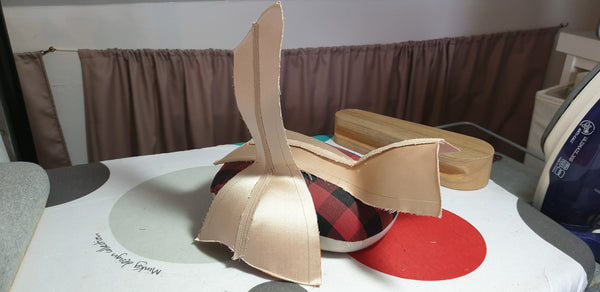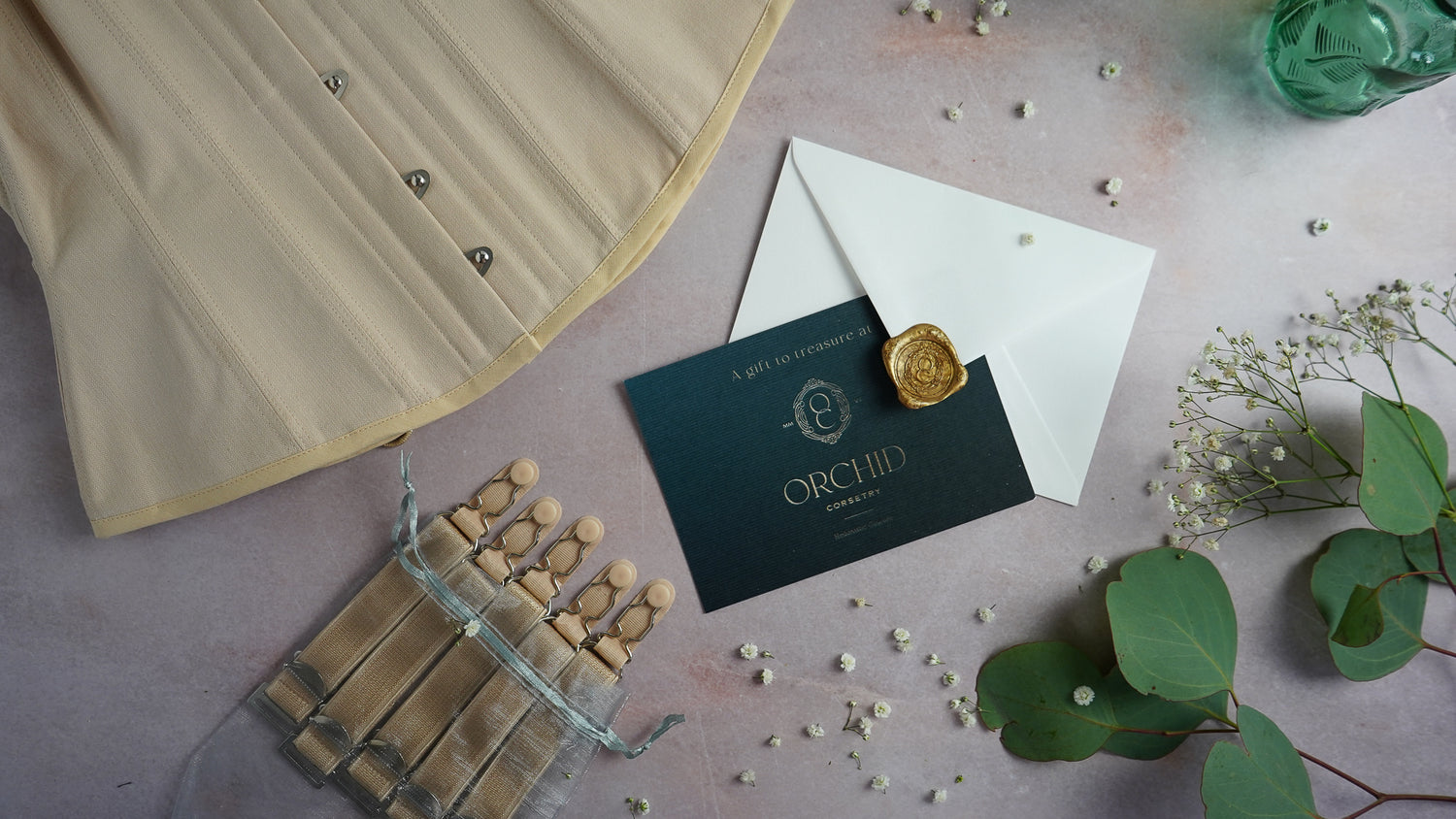‘Tis the season of shopping, excessive packaging and glitter everywhere! If that sounds a bit “Bah Humbug” let me reassure you- I blimming love Christmas. But seeing piles of sparkly wrapping paper in the trash always makes me conscious of the ecological cost of holiday traditions, so I felt inspired to share the positive story of how we’re trying to fight the wastage of the fashion industry at Orchid.
Corsetry, The Definition Of Slow Fashion.

I think slow fashion is a buzz word that we may not all fully understand. Put simply, slow fashion is about a move away from disposable clothing and garments with built-in obsolescence. A move towards long term investment in your wardrobe that doesn’t tread on the workers behind the label. Developing countries are not always able to supply safe working conditions and fair pay whilst meeting the price demands of big high street names. However there are some great brands like Dorsu in Cambodia setting the standard for high quality clothing that supports great working conditions and proper pay.
To me, corsets from independent makers are the perfect example of slow fashion at work. At Orchid, there is just me working on your bespoke order, through communication, pattern cutting, construction and even the post office run. I have other people who work on my website etc, but the actual labour takes place in my home studio looking out over the Welsh hills. This means no uncomfortable feelings about “who made my clothes?” and knowing that you are supporting the 21st century version of British manufacturing. The cottage industries and small enterprises who exercise their craft with pride. That also means taxes paid in this country, not profits hoarded overseas!
A corset is also, by its nature, an heirloom item. It has been crafted to your specifications, we have worked on it together through emails, in person fittings, and swatches through the post. You have deliberated between two perfect shades of blue, and we’ve planned each component to work for your body and requirements. This year I’ve had the pleasure of many past clients returning for new corsets, one of whom had been using their last corset for 7 years! I call that good value for money, and good care of the resources that go into creating a luxury garment.
Low Waste Production

A big plus point about shopping small is that we are able to reduce waste of precious resources. When I cut a corset, I am careful to lay all my pattern pieces in such a way that the materials go as far as possible. This makes financial sense, silk satin is incredibly expensive, and some of the lace I use is well over £100 a metre. But also, from manufacturing of fabrics to ordering them in from overseas, there can be a large carbon footprint in what ends up on the cutting room floor. It’s unavoidable that there will be some waste when you cut a garment, but here’s what I do to minimise that impact.
Any pieces that may be used for cups or short waspie panels on a future order are obviously saved. In the fitting room I have a waterfall of vividly coloured fabrics to choose from, many of which are saved from previous orders. If it's in stock as a remnant, you aren’t charged for it. This encourages clients on a budget to choose from the beautiful things that we already have rather than shipping new exotic items across the ocean. Little scraps are saved back for colour swatches for clients or the many patchwork projects I keep meaning to do! I also send free packs over to crafters such as rag ruggers and doll makers, and save up my empty cotton reels for local playgroups crafts! It might sound silly, but little changes can have a big impact when we all take part.
Lately I have started to design new products that use up the awkward off-cuts of luxury fabrics that I can’t bear to throw out but were too small to be useful in a meaningful way. This is how the Isolde neck corset was born! The silk bobbinet (mesh) I use for hot climate corsetry and lightweight shapewear comes in quite narrow widths. This means that I’m often left with a few inches on the end of a piece that will never be used in a regular corset. These sections are perfect for the delicate panels of a neck corset, and now, when I’m cutting out a waspie and see a space inbetween pattern pieces, I’m cutting out spare panels for the next Isolde order! The silk satin channels that hold the boning also allow me to use short bias lengths of this luxury fabric without cutting it from a new piece. So we have a sensuous new product where I don’t need to charge the client for material costs, and a less waste makes its way to landfill. Everyone wins.
Lastly- I do try to keep packaging at a minimum. I want you to feel the thrill of opening our beautiful branded boxes, but I also hope that you keep them after the unboxing ceremony! They make great wardrobe organisers, and stop your corset laces getting tangled with the rest of your collection! Incidentally, all our boxes are FSC certified and fully recyclable. You will often find a thankyou card in with your order and a business card or two, but I don’t send you reams of postcards, catalogues or stickers as experience says, these tend to end up in the bin! If you’ve spotted a way you think we could improve things further, it would be great to hear from you. Let me know your thoughts about UK manufacture and what matters to you in the brands you support.


